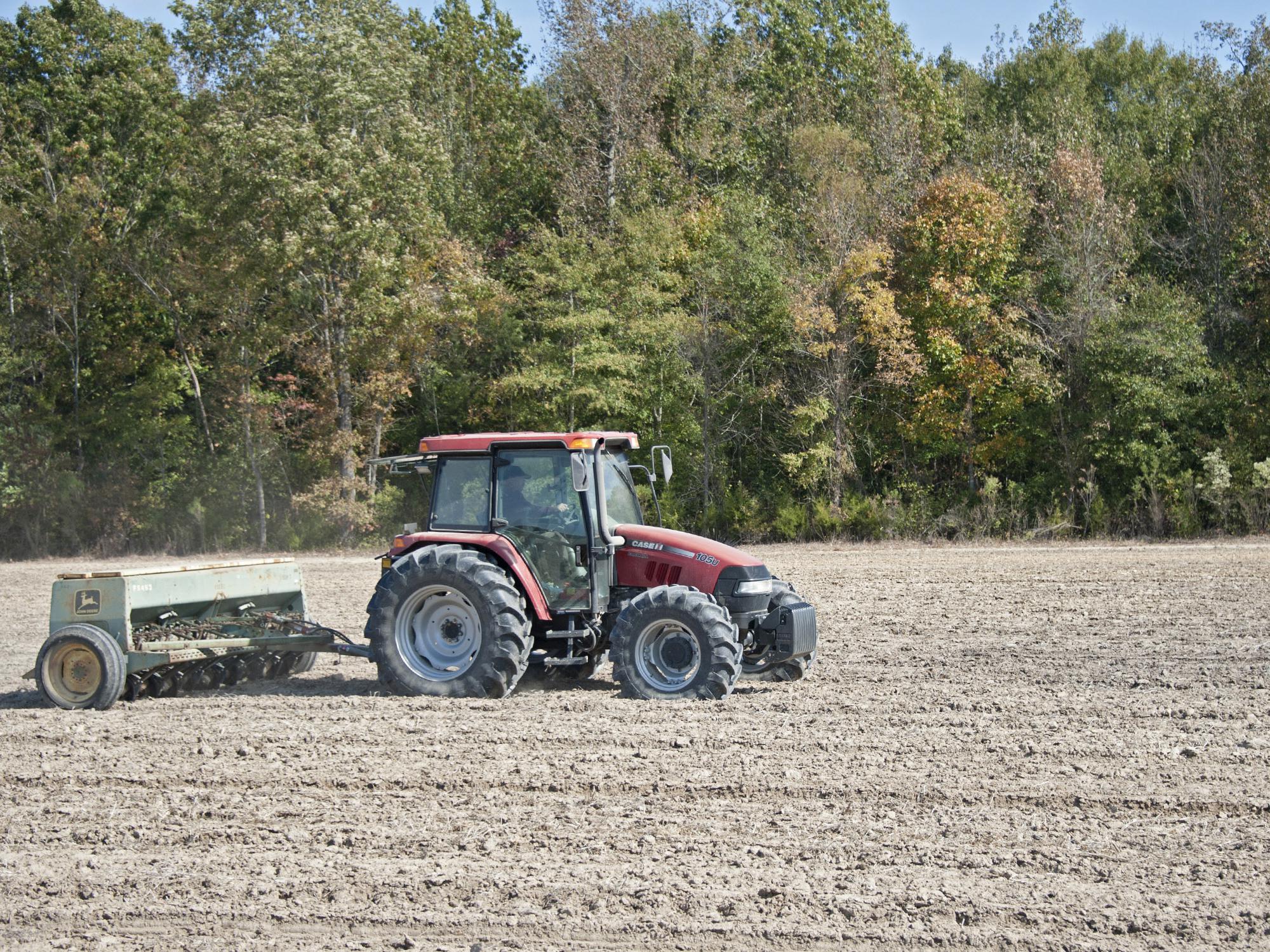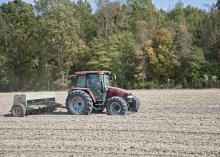Information Possibly Outdated
The information presented on this page was originally released on November 7, 2014. It may not be outdated, but please search our site for more current information. If you plan to quote or reference this information in a publication, please check with the Extension specialist or author before proceeding.
Good summer crops mean low wheat acreage planted
MISSISSIPPI STATE -- Excellent summer crop harvests in recent years is partly responsible for a significant decrease in the amount of wheat being planted in the state this fall.
Official estimates are not yet available, but Erick Larson, grain crops agronomist with the Mississippi State University Extension Service, said he expects state farmers to plant less than 150,000 acres of wheat in 2014. Wheat planted in the fall is harvested early the following summer.
“We had 230,000 acres of wheat planted in 2012 and 400,000 planted in 2013, and the state’s acreage is expected to drop again this year back to levels previously grown in 2009 and 2010,” Larson said.
The low acreage is mostly the result of economic considerations, but a later-than-usual harvest for summer row crops played a role as well.
“Soybeans likely compete with wheat acreage more than any other crop,” Larson said. “With recent record soybean crops, full-season soybeans have looked very favorable compared to wheat.”
Some producers double crop, or plant a late soybean crop after wheat is harvested in June. Larson said high land rental rates drive some producers to plant winter wheat to help cover costs.
“Wheat is a crop that can generate some income earlier in the year, but it also gives growers an opportunity to use the time after wheat harvest to do field work and land improvements,” Larson said.
Recent record or near-record row crop yields have been matched by mostly strong prices, keeping farm incomes high and offering farmers higher than average profits.
The U.S. Department of Agriculture estimated 37 percent of this year’s winter wheat crop in Mississippi was planted by Nov. 2. This puts the crop a little behind schedule, as 43 percent is usually planted by this time. The majority of the crop is in good condition. Wheat can be planted through Thanksgiving for most of the state.
In the fall, wheat in Mississippi needs to emerge into a healthy stand. Individual plants begin tillering, or putting out extra vegetative shoots from the base of the plant. Temperatures below freezing slow plant growth in the fall but do not damage the plants.
Wheat plants go dormant in the winter, and even extremely low temperatures do not harm plants that have established a good root system.
Brian Williams, Extension agricultural economist, said prices have a big influence on the number of acres farmers plant in wheat.
“While wheat prices have fallen from levels of a year ago, prices for competing crops have also fallen,” Williams said. “At lower prices, wheat can be slightly more competitive because of lower production costs compared to corn, as well as the ability to double crop with soybeans.”
Wheat prices have been trending up since late September, with July 2015 futures climbing from $5.03 per bushel in late September to as high as $5.65 per bushel the last week of October.
“While they have been in an upward trend, prices are still much lower than a year ago when they were trading for around $6.85 on Nov. 1,” he said.
Wheat prices have been boosted by increases in other markets, but the potential for higher wheat prices is limited.
“Global production looks to be good this year, and U.S. exports have been weaker than expected,” Williams said.










